Road of the great beginnings
Ion Creangă Museum (Bojdeuca lui Ion Creangă)
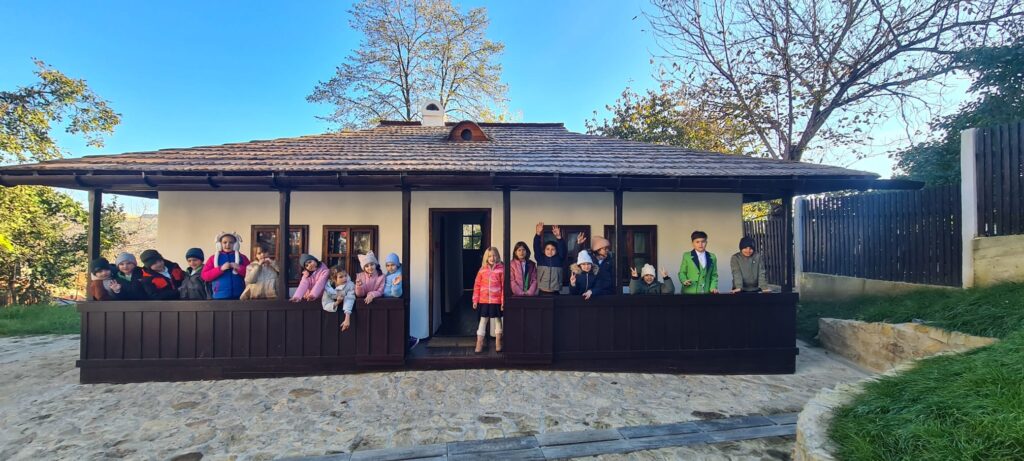
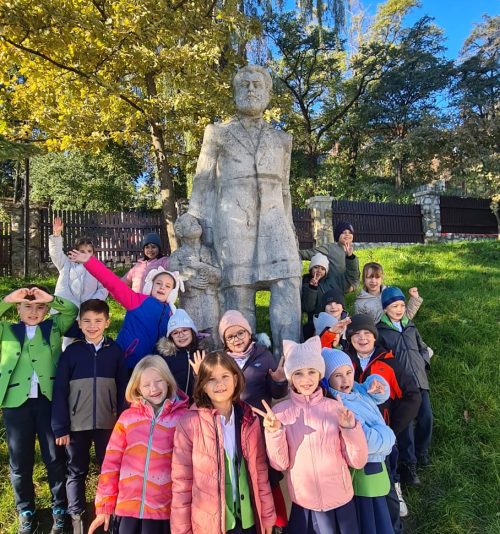
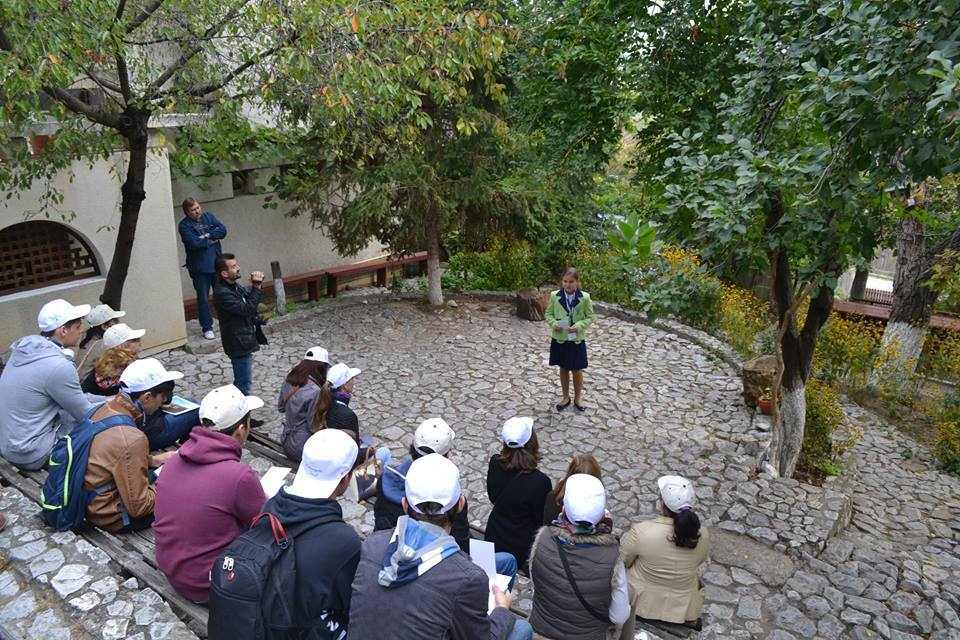
Ion Creangă’s Bojdeuca is not just a physical place but a symbol of creativity and simplicity, a space where rural life and Creangă’s literary spirit met to give birth to unforgettable stories. The bojdeuca is a simple construction specific to the Moldavian area, with two rooms and a small shed. This reflects Creangă’s modest lifestyle, far from urban pomp but full of rural simplicity. Bojdeuca is surrounded by a small garden where Creangă used to work. Inside the building, most of the pieces of furniture are original and belonged to Creangă. Visitors can see the desk where he wrote, the bed he slept in, and other personal items that have been preserved over time.
The building that houses the „Poni – Cernătescu” Museum, declared a historical monument, was built in 1839 by Metropolitan Veniamin Costachi (1768-1846). In 1880 it became the property of Professor Petru Poni, a member of the Romanian Academy, an exponent of the generation of scientists who laid the foundations of Romanian science.
Since 1925, the house belongs to Petru Poni’s daughter, the chemist Margareta Poni, who donated it in 1971 to the Popular Council of Iași, in order to be organized as a memorial museum dedicated to the Petru Poni family. The park of the house and its gazebo, called the “poetry kiosk” – rebuilt in 1995 – where they read lyrics by Mihai Eminescu, Veronica Micle, Matilda Cugler-Poni, give a special charm to the building.
Pogor house or “The House with Lighted Windows” is the first private building in Iași with electric lighting.
The building worked as headquarters of “Junimea” Literary Society, founded in Iași in 1863 at the initiative of some young people returned from their studies abroad: Titu Maiorescu, Vasile Pogor(son), Theodor Rosetti, Iacob Negruzzi and Petre P. Carp. During the many meetings at Junimea, some of the most famous writers appeared, such as Mihai Eminescu, Ion Creangă, Ioan Slavici or Vasile Alecsandri. During the world wars, the cellars of Pogor House were transformed into ammunition and weapon stores. Since 1972 it became the residence of the Literature Section of the Moldova Museum Complex, separated afterwards, since 1990, into the Iași Museum of Romanian Literature, an independent institution.
Alexandru Ioan Cuza University
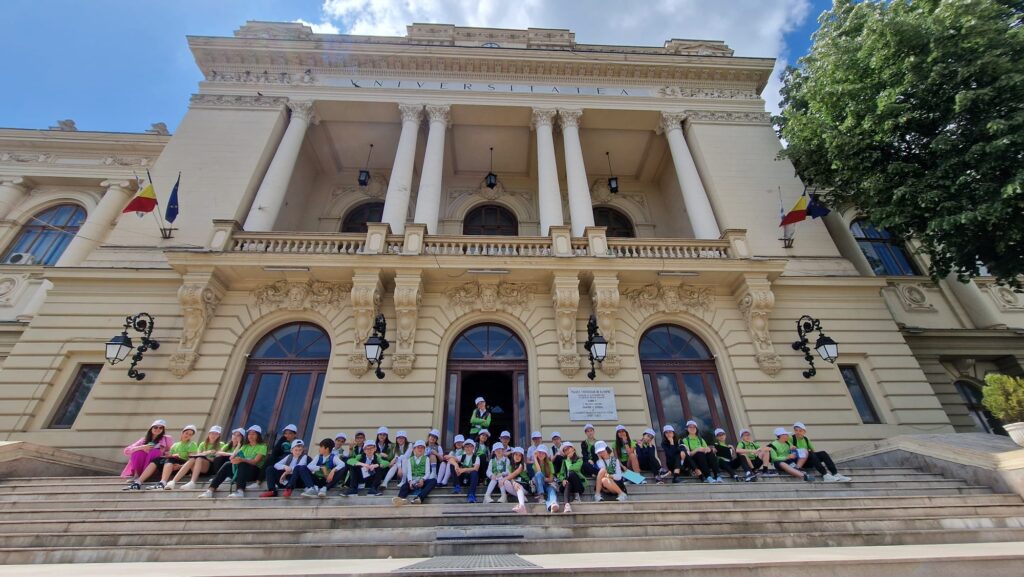
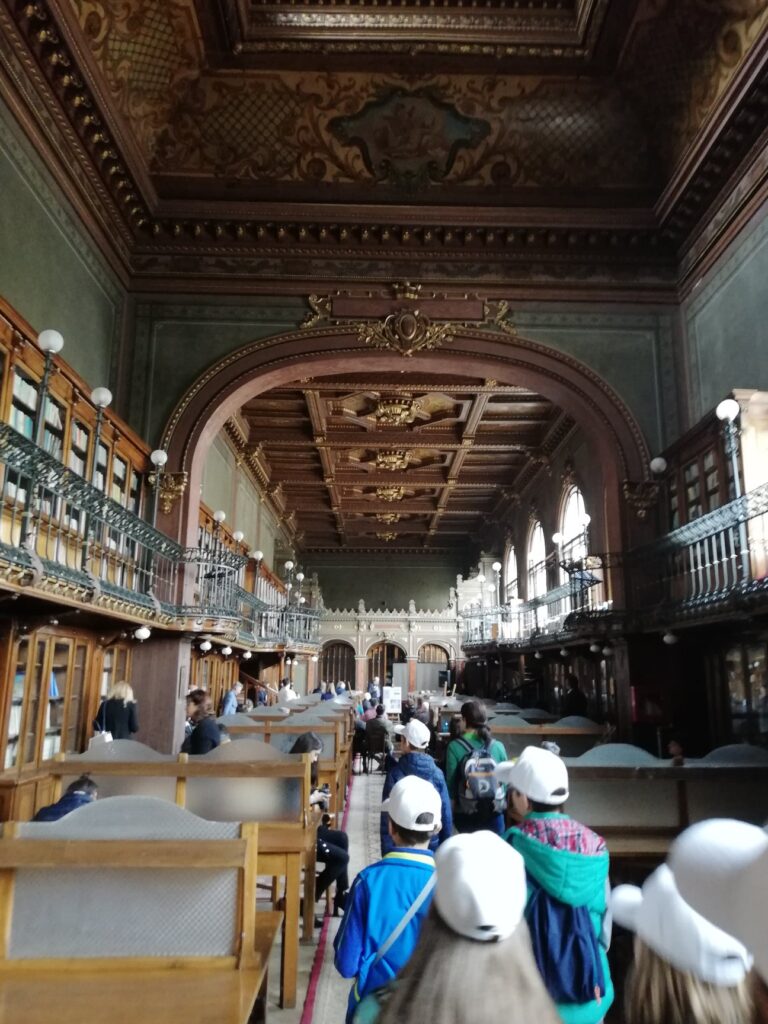
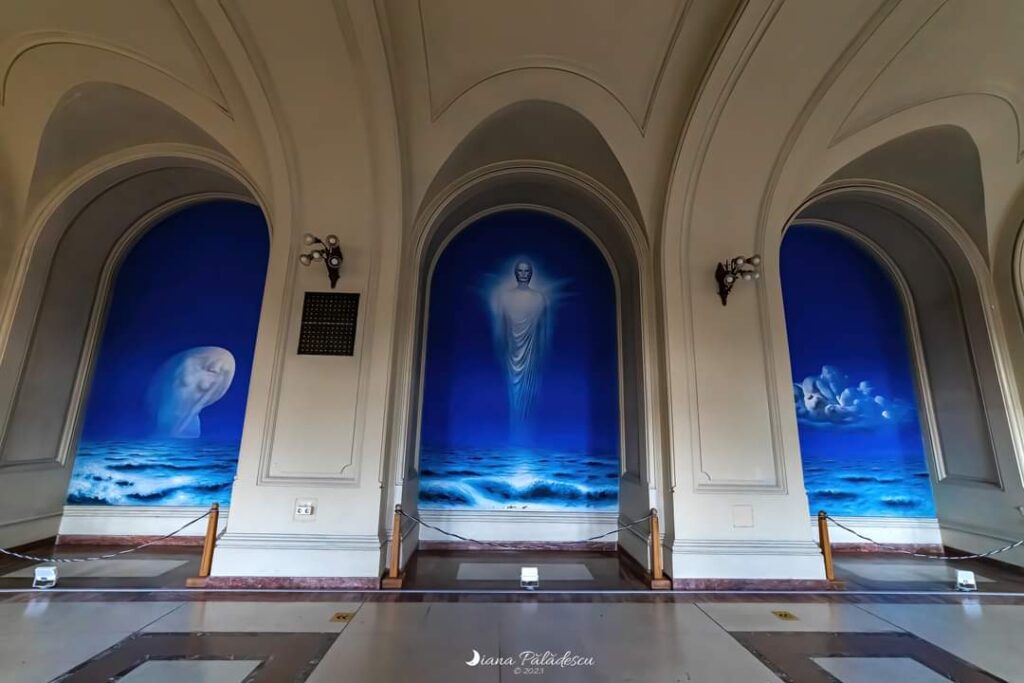
Look at this imposing building. It is the first Romanian university, Al. I. Cuza, founded in 1860. The building was erected after the plans of the Swiss architect Louis Blanc, in French eclectic style, combining Classic and Baroque styles. In front of the University there are the statues of the great historian A. D. Xenopol (rector of the University) and of the prime-minister Mihail Kogălniceanu (with two alto-reliefs representing his role in the election of Cuza in 1859 and in the Land Reform in 1864). The main hallway from the ground floor, with an impressive length of almost 130 metres is suggestively called the “Hall of Lost Steps”. The 19 niches are beautifully decorated with surrealist wall paintings of the painter Sabin Bălașa. This building also houses the library of the Gheorghe Asachi Technical University, witch was chosen as the most majestic library in the world in a raking by Boredpanda.com. (the “competition” lists architectural masterpieces such as the library of the Trinity College in Dublin, the Portuguese Royal Library in Rio de Janeiro, The National Library in Prague or the National Library in France). The Alexandru Ioan Cuza University offers study programmes in Romanian, English, and French. The university is a member of some of the most important university networks and associations: the Coimbra Group (CG), Utrecht Network, European University Association (EUA), International Association of Universities (IAU), University Agency of Francophony (AUF), and the Network of Francophone Universities (RUFAC).
Copou Park and Linden Tree
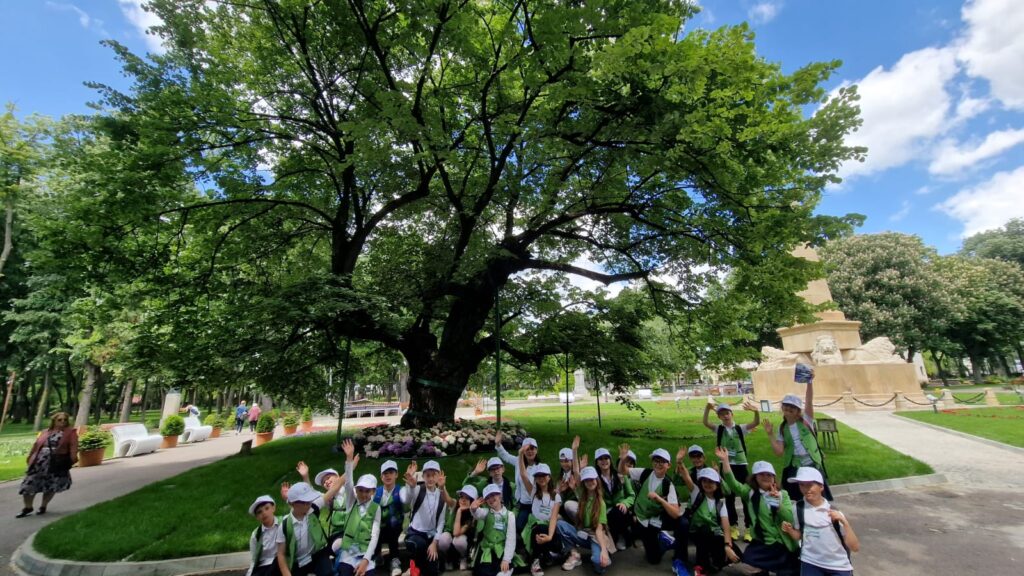

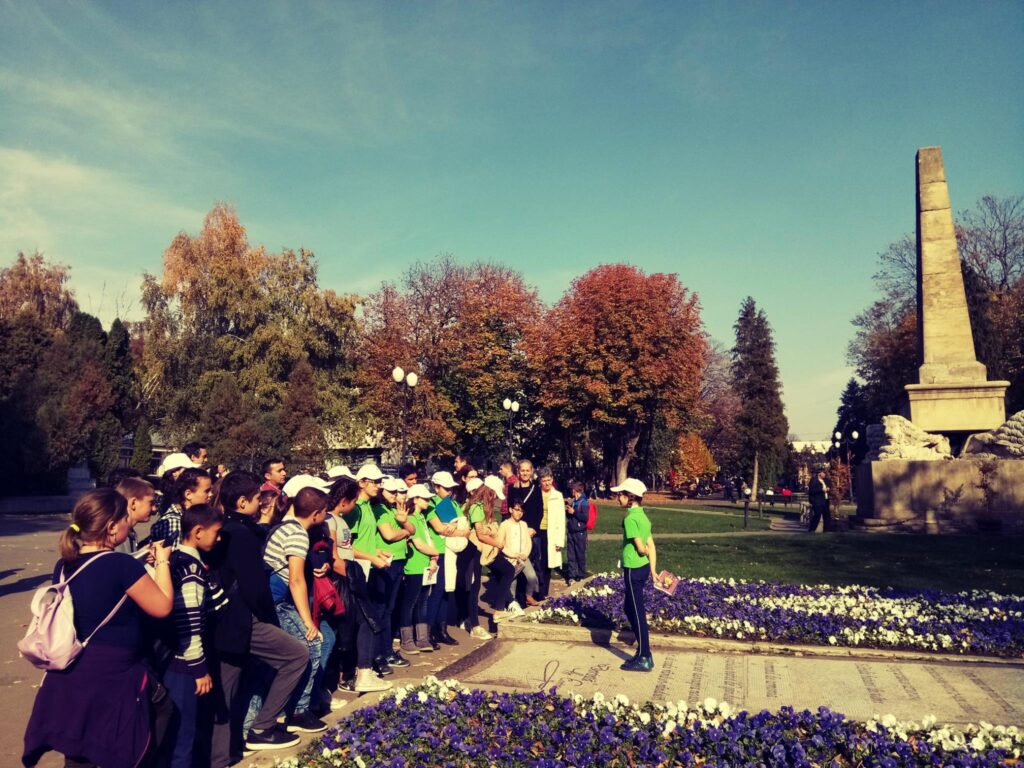
Copou Park, situated on the hill of the same name, is the oldest one in Iași and Moldavia and covers almost 10 hectares. The park has five entrances, and in its center, there are some of the most famous attractions of Iași: Eminescu’s Linden Tree, the Lion Obelisk, and the “Mihai Eminescu” Museum. The famous linden tree of Eminescu, one of the oldest and most important tree monuments in Romania, is over 460 years old. Nearby, on the 15th of June 1989, on the occasion of the 100th anniversary of the poet’s death, the “Mihai Eminescu” Museum was inaugurated. The Lion Obelisk was built in 1834 and is also known as the Monument of the Organic Regulations because it celebrates the quasi-constitutional organic law issued in 1831-1832 by the Russian imperial authorities in Moldavia and Wallachia.
In 2023, Copou Park was designated the most beautiful park in the country.
Anastasie Fătu Botanical Garden
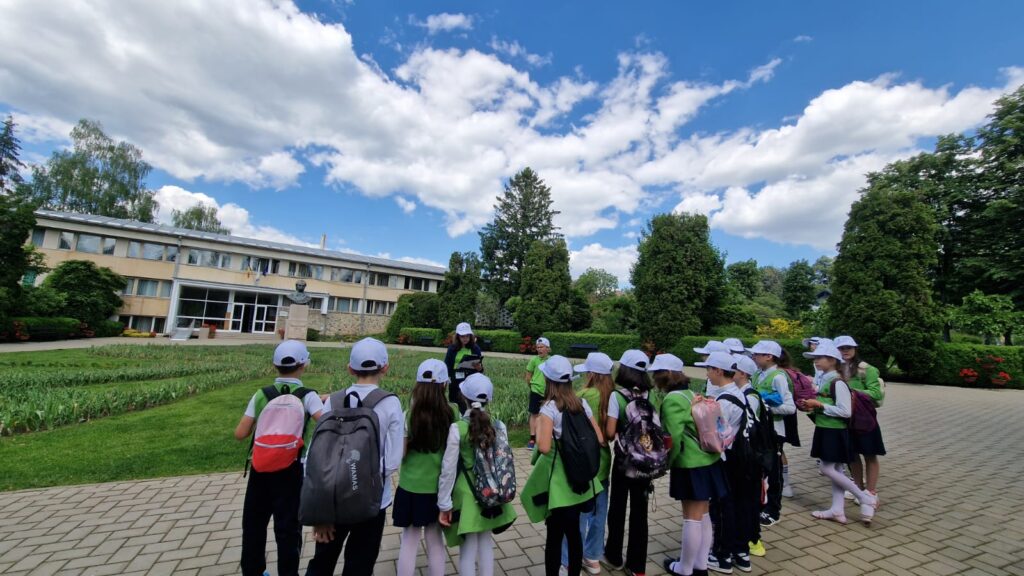
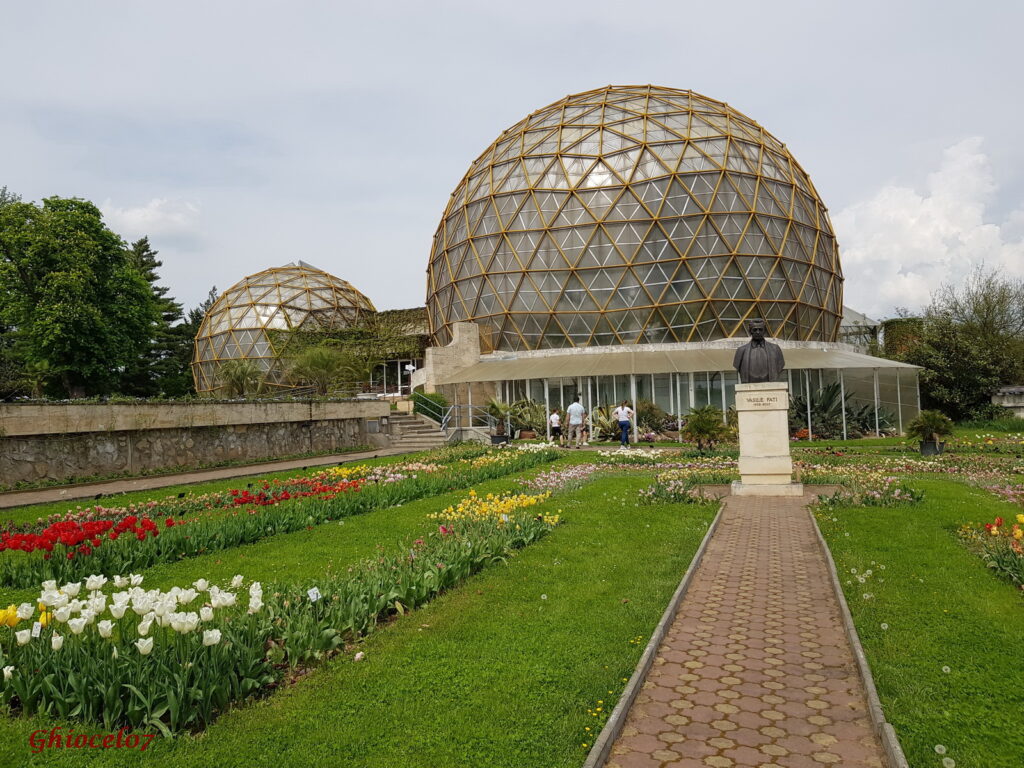
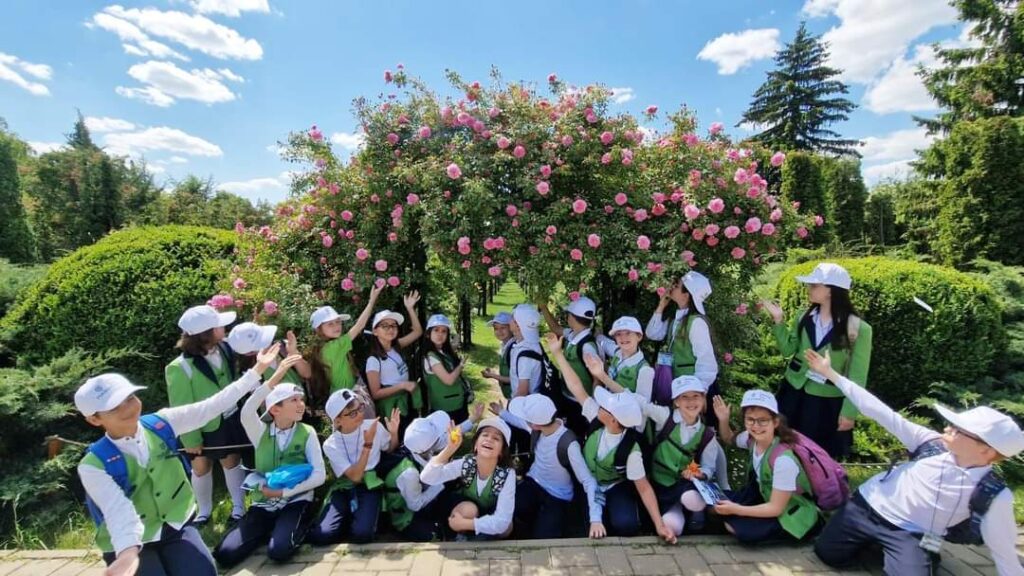
The Botanical Garden of Iași was founded in 1856 by Anastasie Fătu, an important doctor and naturalist from Iași in the 19th century, on land he owned in the Yellow Precipice area. The current location of the Botanical Garden, named after its initiator, “Anastasie Fătu,” in Copou Hill, was established in 1964. The area has expanded over time, and today, the Botanical Garden in Iași remains the largest in the country and one of the largest in Europe. It spans over 100 hectares, which include lakes and mineral water springs. The largest section, dedicated to the flowers and vegetation of Romania, covers an area of 25 hectares. An interesting feature of the Botanical Garden is the section for the blind. Founded in 1991, this section includes over 30 species whose main characteristics are strong fragrances and certain leaf particularities, which allow blind people to learn about the plants through touch. The section has labels written in Braille that provide essential information regarding each exhibited species.